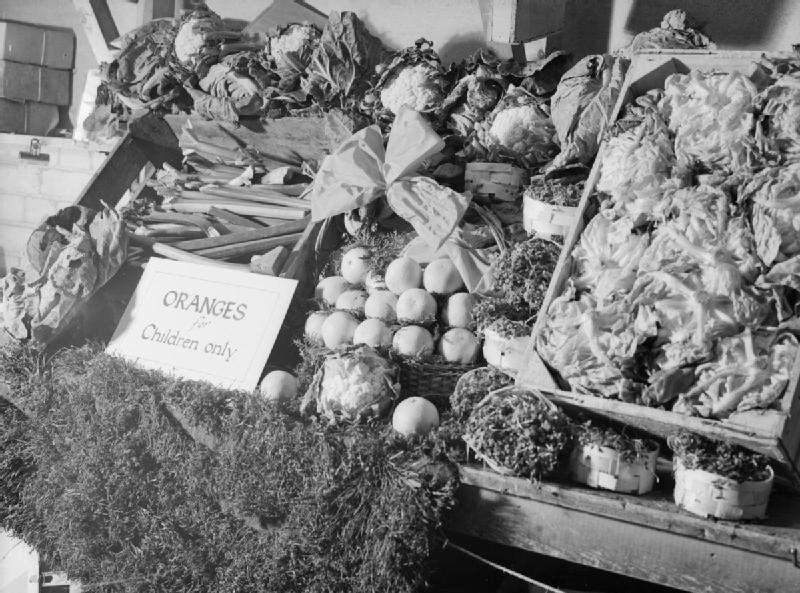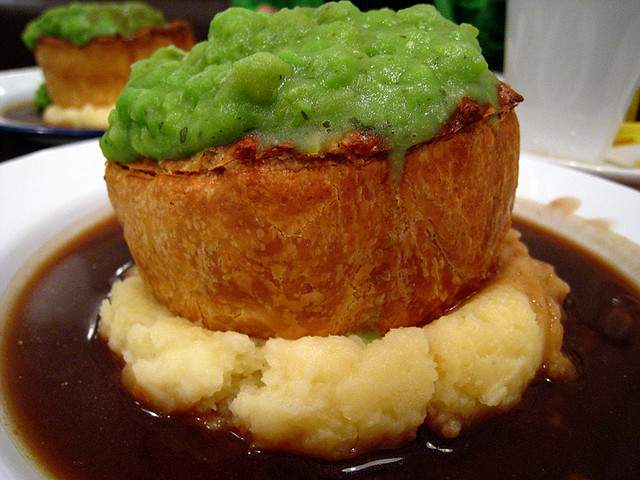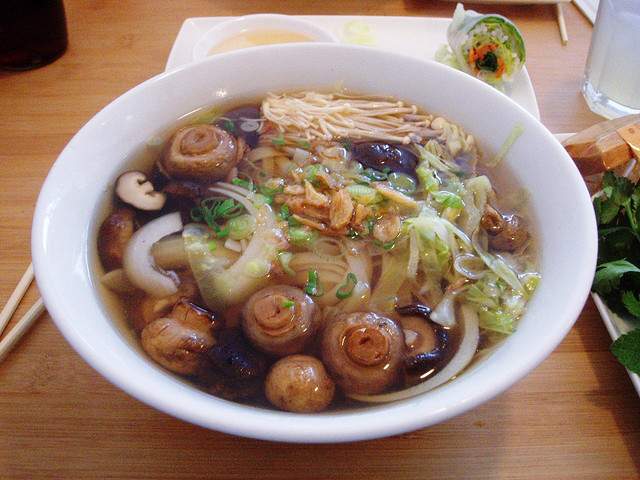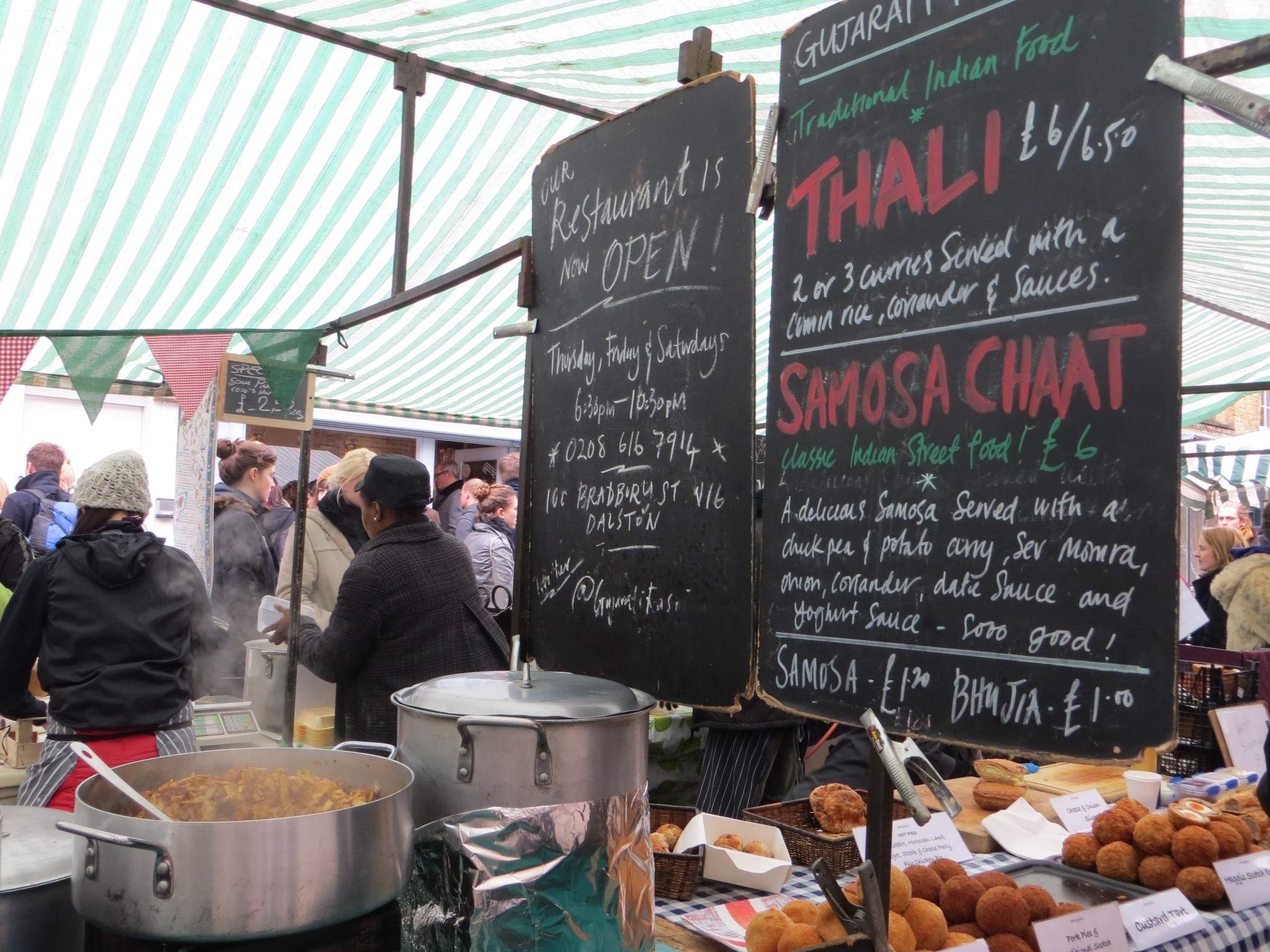“British food is awful!”
If I had a rupee for every time I heard a fellow traveler throw down that declaratory statement, I wouldn’t have to work to fund my travels. However, while I accept that this particular stereotype holds strong about my home country and its cuisine, I do not accept that it is true.
Every country has its culinary embarrassments, whether it is a particular dish, a bad restaurant (or two), or specific cities that don’t shine in the cooking department – Venice in Italy springs to mind. Despite being located in one of the best foodie countries in the world, it is well known that trying to find good grub in the canal riddled city requires something akin to witchcraft.
While I’m not suggesting Britain is the misunderstood culinary equivalent of its Italian neighbour (let’s face it, Italy exists in its own epicurean stratosphere), I wholeheartedly believe that British food is underestimated, the stereotypes are no longer deserved, and good food is firmly on the British menu.
There’s no smoke without fire: How Britain got its bad food rap

Think back a couple of centuries, and it’s hard to understand how Britain ever developed a bad reputation for its cuisine. The international breadth of the British Empire perfectly positioned Britain for the import of exotic food, herbs, and spices from around the world. Add Britain’s own system of agriculture and the country’s store cupboards were set for a feast. And for many years that feast took place with Edwardian and Victorian Britain known for its indulgence (anyone who has watches Downton Abbey will be familiar with the food feasts).
Then war broke out and Britain’s kitchen culture changed for the worst. By the time of the Second World War, Britain’s reliance on imported food had become untenable, and the government reacted with a system of food rationing that many experts identify as the culprit for present day bad-food stereotypes.
For 14 hard years until 1954 Britain’s kitchens were stripped of all but the most basic ingredients, acting as a shackle for even the most creative chefs. In short, cooking in Britain became a practice of sustenance and nutritional necessity over taste and form.
The traditional practice at that time of boiling food beyond redemption can’t be overlooked either, with grey proteins and mushed vegetables adding to Britain’s bad-food reputation. As the crematoria style of cooking, using a limited range of ingredients was passed down from one generation to another, the bad-food stereotype persisted for decades.
Britain’s kitchens today

Over 50 years has passed since rationing came to an end. After a brief flirtation with nouvelle cuisine, adopted from the French, and fast food, inspired by America, Britain’s cooking methods and talents have morphed once more.
A new generation of chefs have dusted off the pre-war recipe books and rediscovered with a passion what the country once did well: use a broad range of ingredients to create mouth-watering stews, pies, casseroles, breads, pastries, and cakes (to name a few).
What has proven much harder to achieve is eradication of the food stereotype that lingers in the mind of visitors and hangs over the entrances of every food establishment on British soil.
But the story doesn’t end there. Britain has once again seized on its international status, making the most of the multitude of cultures that have chosen to call Britain home, bringing global recipes with them and making the country all the tastier for it.
By the time the new millennium arrived, Britain had worked hard to right the wrongs that had defined its food in recent decades. What has proven much harder to achieve is eradication of the food stereotype that lingers in the mind of visitors and hangs over the entrances of every food establishment on British soil. That is not to say that bad food has been obliterated in its entirety – bad restaurants exist the whole world over, but what Britain does deserve is fresh consideration as a culinary achiever.
What’s so good about British cuisine?
If British food is no longer soggy vegetables and boiled to death beef, what is it?
London is a popular starting point for the rediscovery of the Great British menu. As one of the world’s most popular capital cities, it is little surprise that London attracts some of the best chefs from around the world, as well as keeping much of its home grown talent rooted to their native country. From Michelin starred establishments to gastro pubs, London presents some of the country’s best taste opportunities, with flavors that range from century old recipes that have been given a modern twist to international dishes satisfying every food craving.
Yet, culinary mastery is not the preserve of the capital. As regions return to their roots, there has been a renaissance of and refocus on traditional local tastes that are worthy of investment and promotion alike. In recent years, farmer’s markets have thrived, food sourcing has turned both seasonal and local, fresh food is back on the menu, quality knows no compromise, raw talent is going mobile with street food stalls, and Britain is arguably producing some of its best food ever.
How to find good food in Britain
If all of this is true, and I accept you may remain skeptical, then how do you find good food in Britain? The trick is two-fold – first, you need to know what to look for, and second, you need to know where to look.

Seek out (PDO/PGI) regional food and drink: Without getting too technical, the European Union Protected Designation of Origin/Protected Geographical Indication scheme is in place to protect regional food and drink that is authentic and therefore worthy of premium promotion. Champagne is a good example – only sparkling wine produced in the French champagne region merits the name champagne.
Britain can proudly claim dozens of food and drink items that have been registered with PDO/PGI status and has many more applications awaiting approval. From the Cornish pasty to Melton Mowbry pork pie, regional cheeses, ciders, ales, and Scottish wild salmon, the list provides a wonderful basis for touring many different areas of the country, sampling the items as you go.
A full list can be found on the official EU website.
Eat with the season: Like many developed countries, it is possible to get most foods year round. Sadly (for taste purposes), much of this food is shipped in from overseas or artificially grown, stored, or produced out of season. While Eton Mess (an ingenious concoction of strawberries, cream, and meringue) might be what you’re craving on a spring day, British strawberries are at their ripest, juiciest, and therefore most flavorful in the peak of summer.
Equally, autumn is the perfect time for fresh pear juice and apples, while asparagus has a short seasonal life and is best enjoyed around May-June. If you want to maximise the taste of the foods you eat in Britain, make sure you eat with the seasons.
This interactive calendar should help you know what’s in season and when.
Eat local with farmers’ markets: Seeking out farmers’ markets is a good way of eating locally. Whether you’re picking up fruit, vegetables, and fish for a hostel cooked dinner or whether you go to the market to graze your way through the pre-cooked foods, these markets are one of the best ways of getting your hands on high quality, fresh, home cooked/farm reared, and often organic food.
There are plenty of markets to choose from, even within the capital, where, despite the usual premium on space, the likes of Borough and Spitalfields markets continue to trade strong. For something smaller or more regional, the Local Foods website is a good way of finding out what is going on where you are.
Treat yourself to a Michelin star meal: Admittedly, most independent travelers simply don’t have the spare cash to dine out Michelin-Star-style every night, but if you do feel like treating yourself, there are dozens of British restaurants that have earned the much coveted Michelin stars…and eating at them may not be as expensive as you think.
While dining at Alain Ducasse at the Dorchester might feel like a punch in the wallet, a good number of pubs as well as restaurants outside London have been awarded Michelin stars and often have menus that are more affordable. Likewise, a lunch time visit can shave pounds off the bill, and don’t forget to search for online deals – a quick check on lastminute.com shows many Michelin star restaurants in London offering fixed price menus that include up to three courses for under £30. Not budget by any means, but not a bad price for the stars that come with it.
To search for Michelin Star restaurants, use the official Michelin website.
Get on the celebrity chef bandwagon: Whether you love or hate the trend in recent years that has propelled many chefs to superstar status, there’s no denying it has upped the ante in the food stakes, and Britain can lay claim to many of these newly famed individuals. Gordon Ramsey, Jamie Oliver, Rick Stein, and Heston Blumenthal are just some of the celebrity chefs that are native to Britain and have restaurants here.
With ever expanding reputations to protect, the restaurants of these chefs are often a safe bet for high quality food. Think they’re no more affordable than Michelin Star places? Think again. Jamie Oliver, for example, has opened a chain of Italian restaurants that offer fair priced food, while Rick Stein and Heston Blumenthal both own pubs that provide more affordable menus.

Enjoy the expansive international scene: Thanks to Britain’s diverse range of cultures, it is possible to eat cuisine from almost anywhere around the world without leaving the British Isles. In fact, stroll through any neighborhood in Britain, and it is usually possible to find Italian, Indian, and Greek restaurants amongst other competing for business alongside British dishes.
However, as with British food, care still needs to be taken when choosing an international restaurant, as quality isn’t guaranteed by default.
Many people use online reviews and word of mouth recommendations to weed out the good from the bad, but there is another way. Locate the areas where large communities from other countries have settled in the UK and sample the restaurants there.
Brick Lane in London is famous around the world for its strong Bangladeshi community, and the food there is as good as you will find outside of the country of origin. Likewise, Birmingham is reputed to be the best place to get Balti outside of India, New Malden in Surrey is known as Little Korea, and the Vietnamese restaurants in Hackney make selecting between them a difficult task.
Eat on the street: Street food has seen a huge gain in popularity in Britain and other countries in recent years as we tune into the benefits of eating freshly prepared and affordable food from portable food stalls. Often specializing in one or two dishes, the increased presence of street food stalls has redefined a way of on-the-go eating that was previously plagued by high-fat, low quality hamburgers and late night kebabs of questionable origin. Now, talented chefs are able to share their culinary skills with passing customer without the barriers that come with fixed premises.
Broadway Market in Hackney in London’s East End is one of my favorites, with a huge range of stalls selling everything from Pho to Thali to hand crafted pies and pasties. Like many of the markets, the street food stalls are supplemented by a farmers’ market, making them an all-round good foodie day out. The Street Food website has a map of other similar markets around Britain

Eat something home-cooked: An underground craze of supper clubs has taken hold in recent years, as the recession has pinched and people have tired of paying extreme prices in high-end restaurants. As individuals open their homes for dinner, diners can pay a fixed-price for a set menu and dine on proper home cooked food. Not only that, you get a chance to meet new people and really engage in daily British life (be prepared to spent a lot of time discussing the weather).
Taste the British traditions: With all of the excitement of new ways to dine, award winning chefs, international hubs, and fresh produce, it’s easy to forget the more traditional British food traditions. With the bar set high by the fresh wave of competition, even the more traditional venues are upping their game, and everyone’s palettes are better for it. If you want a traditional taste of Britain in one day, here’s how to do it:
Breakfast: Start your day with a trip to a “greasy spoon.” These breakfast cafés will give you the perfect introduction to the British institution that is the “fry-up” – a plate of eggs, bacon, sausage, tomatoes, mushrooms, and toast. Expect a pot of tea to wash it down, and expect to feel full to the seams when you’re done.
Lunch: It may be hard to contemplate another meal after eating at a greasy spoon, but lunch is an unmissable opportunity to taste more of Britain’s traditional dishes. Depending on your location, you might want to pick up a Cornish pasty on the go, dine out on take-away fish and chips (fat, squidgy fries) on the beach if you’re near the coast, or find an East End pie, mash, and liquor shop (parsley sauce, not alcohol).
Afternoon Tea: Yes, there is barely time to breathe between eating when suddenly the magical hour of 3pm comes around, and it’s time for afternoon tea. Delicate finger sandwiches (crusts cut off, of course), scones and…more tea…are the staples. Many of the top hotels in London offer afternoon tea for an eye watering price, but plenty of cafés and bars are getting in on the action for a more affordable rate. Otherwise, if the weather works in your favor, pick up the makings from a supermarket and tea from a café and head to a park for an afternoon tea picnic.
Dinner: As 5pm rolls around and offices start to shut down for the day, it’s time to head to the pub for a few pre-dinner beverages. British Ale is one of the best brews on the menu and the perfect prelude to a good pub dinner. Casseroles in winter, Chicken Tikka Masala if you want to enjoy the nation’s favorite dish, or skip straight to a sticky toffee pudding dessert if the day’s eating has you full to bursting.
After you dab your napkin in satisfaction, sit back in an armchair by the fire (it’s most likely the middle of winter outside, even in June) and make a mental note to tell your friends back home: British food really does deserve better than its stereotypes tell.
Planning a multi-stop trip?
Don’t know where to start? Let us help. Sign up today for Plan Your RTW Trip in 30 Days (it’s free!) to start receiving email lesson plans tomorrow.
For more on traveling to England, check out the following articles and resources:
- Read 3 Must-See UK Cities Outside of London
- Read 10 Free Things to Do in London
- Read Around the World in 80 Days
- Find a flight to England
- Check out hostels in England
Photo credits: United Kingdom Government, Dani P.L., Keith Williamson, French Tart, Ewan-M, heatheronhertravelsall others courtesy of the author and may not be used without permission.

